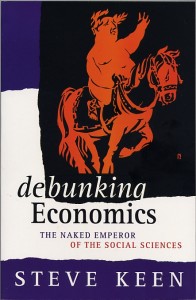This is getting a bit like Star Wars, but I promise–this will be the last post in this series. In the previous two, I constructed a model of a pure credit economy in which the money supply and economic activity can expand smoothly of time.
Of course, that’s not the real world. As we know from the bitter experience of the financial crisis that is this blog’s raison d’etre, finance characteristically destabilises an otherwise healthy economy. Part of the reason for that is the existence of Ponzi Financing–something that the recent Bernie Madoff scandal has thrown into $50 billion high relief.


